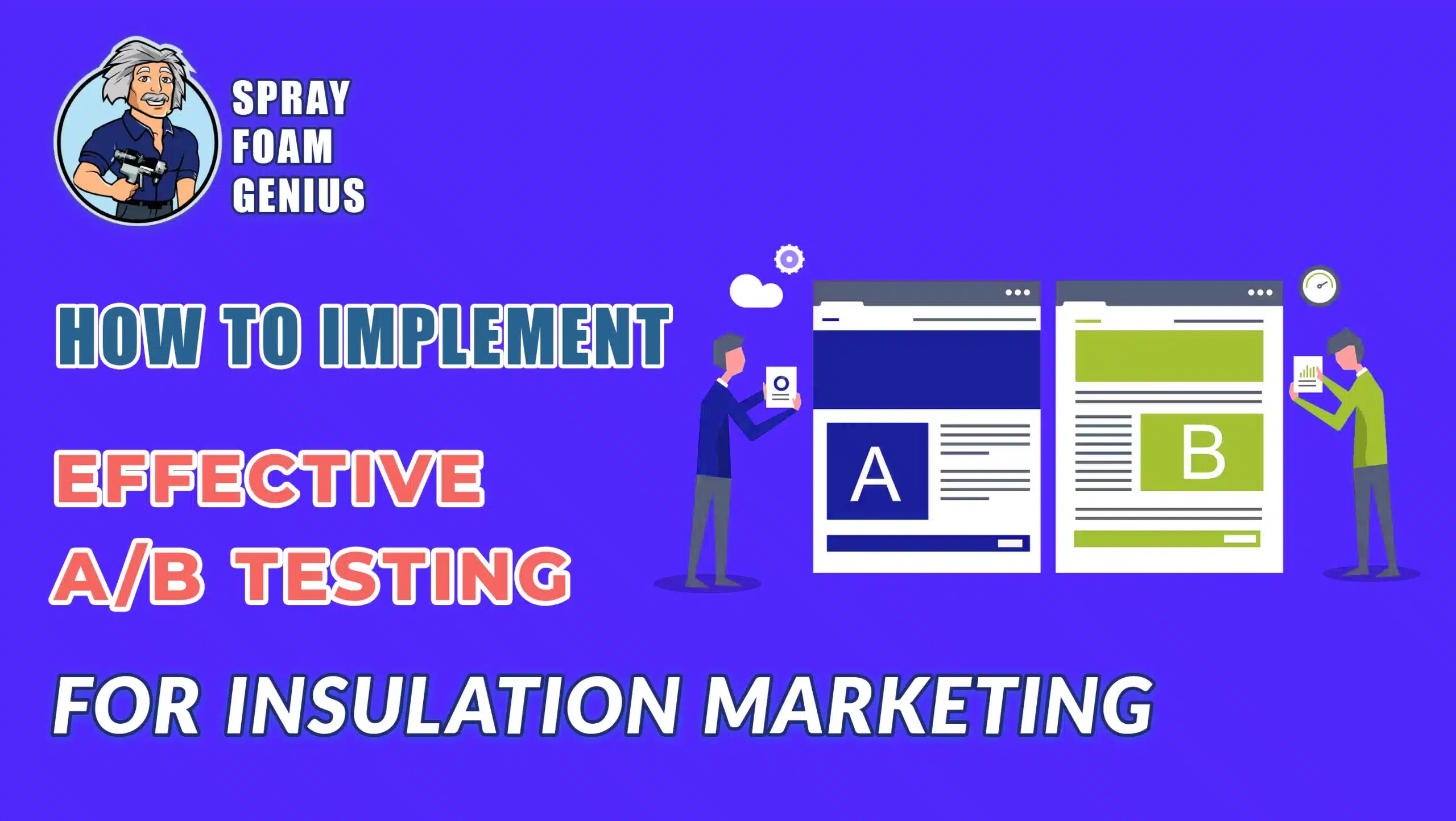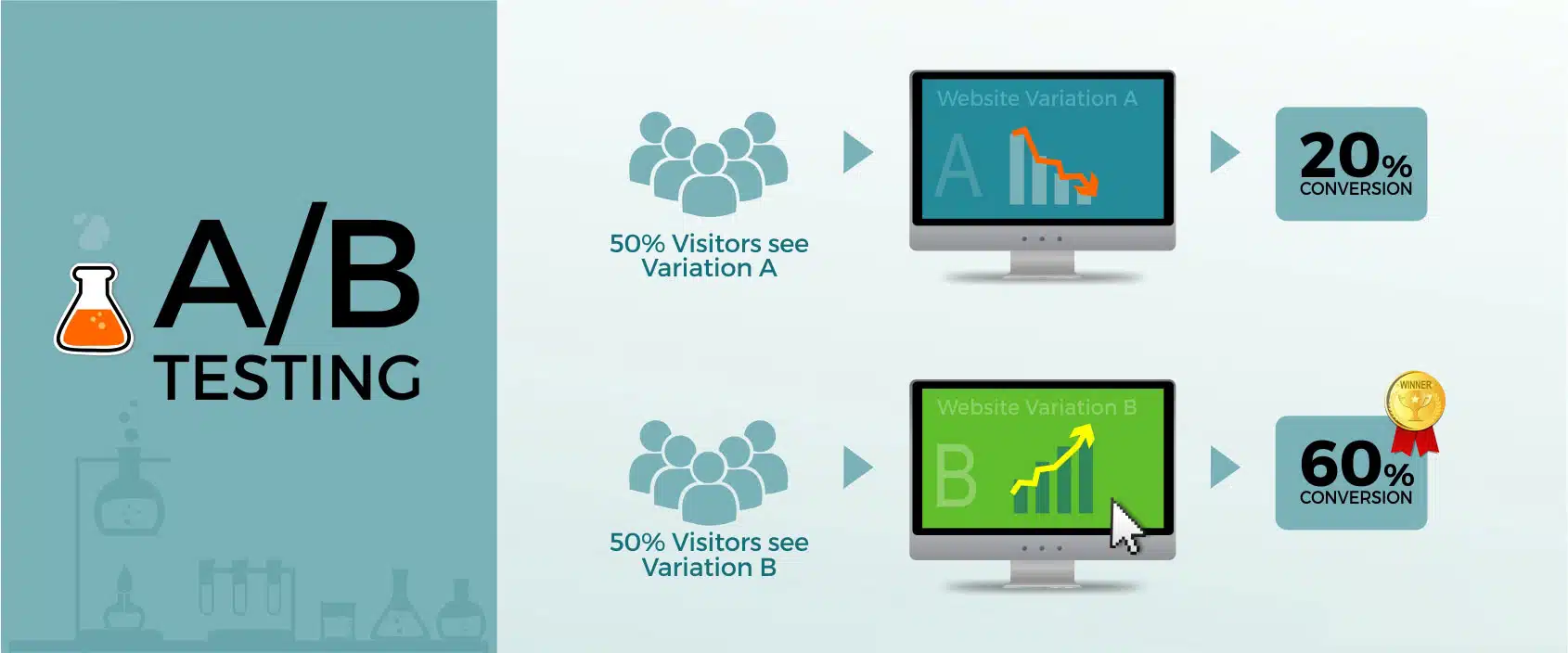
In the world of digital marketing, data-driven decisions are essential for ensuring that your business stays ahead of the competition. As an insulation contractor, implementing effective A/B testing strategies can help optimize your insulation marketing efforts and maximize returns on investment. A/B testing allows you to experiment with different versions of your marketing campaigns to see which one delivers the best results. This approach is crucial for improving lead generation, website performance, and overall conversion rates. At Spray Foam Genius Marketing, we specialize in helping insulation contractors optimize their online presence, and A/B testing is an invaluable tool in achieving these goals.
Understanding A/B Testing and Its Importance for Insulation Contractors
Before diving into the specifics of implementing A/B testing, it’s essential to understand what it entails and why it’s particularly important for your insulation marketing strategy.
What is A/B Testing?
A/B testing, also known as split testing, involves comparing two or more variations of a webpage, ad, or marketing campaign to determine which one performs better. By testing different elements such as headlines, call-to-action (CTA) buttons, images, or even email subject lines, you can pinpoint what resonates most with your target audience.
Why A/B Testing Matters for Insulation Marketing
For insulation contractors, having an effective online presence can make all the difference in generating quality leads and converting website visitors into customers. A/B testing allows you to:
- Refine Your Marketing Campaigns: Test multiple versions of ads, landing pages, or promotional emails to find what works best for your audience.
- Improve Lead Generation: Optimizing your content and forms through A/B testing can enhance the user experience, leading to higher conversion rates and more inquiries.
- Boost ROI: By understanding which elements contribute most to your conversions, you can allocate your marketing budget more effectively.
Implementing A/B testing allows insulation contractors to make data-backed decisions, ensuring that every marketing effort is fine-tuned for the best possible outcome.
Key Elements to Test in Insulation Marketing Campaigns
Once you’ve established that A/B testing is a valuable strategy, it’s time to identify which elements to test in your insulation marketing campaigns. Here are some key areas where A/B testing can have a significant impact:
1. Website Headlines
Your website’s headline is often the first thing visitors will see. It needs to grab attention immediately and convey the value of your services. Testing different variations of headlines can help you understand which message resonates best with potential clients.
Test Ideas:
- A benefit-driven headline versus a service-specific one.
- A headline that focuses on urgency (e.g., “Limited-Time Offer”) versus one highlighting expertise (e.g., “Trusted Insulation Experts”).
- Different lengths of headlines to find what best fits your audience’s attention span.
2. Call-to-Action (CTA) Buttons
CTAs are critical for guiding visitors to take action, whether that’s requesting a quote, scheduling a consultation, or calling your business. Testing various CTA button designs, placements, and wording can significantly improve conversion rates.
Test Ideas:
- Different button colors to see which generates more clicks.
- Text variations like “Get Your Free Quote” versus “Schedule Your Free Consultation.”
- Button placement, such as at the top of the page versus the bottom.
3. Landing Pages
Your landing pages are where the conversion magic happens. Whether you’re running a Google Ads campaign or offering an eBook download, your landing page design and content must be compelling enough to drive users to convert. A/B testing landing pages allows you to experiment with layout, copy, and form design to optimize for conversions.
Test Ideas:
- A long-form landing page versus a short-form page.
- A page with a form above the fold versus one that requires users to scroll.
- Different image placements or hero shots to see which one better communicates the value of your insulation services.
4. Email Campaigns
Email marketing continues to be one of the most effective channels for lead generation, especially for local businesses like insulation contractors. Testing different subject lines, email copy, and CTA placements can help you improve open rates and click-through rates.
Test Ideas:
- Subject lines that focus on urgency versus those highlighting value.
- Emails with a personal touch versus more formal, professional copy.
- Including testimonials or case studies versus keeping the content more informational.
5. Ad Copy and Creative
When running paid ads, every word, image, or video matters. Testing different ad copy and creative formats helps ensure that your ads resonate with your target audience. For example, you might test a Google Ads campaign with different headlines, descriptions, and calls to action to determine which combination yields the best performance.
Test Ideas:
- Test text-based ads against image-based ads.
- Experiment with video ads versus static image ads.
- Try different value propositions or incentives (e.g., “Get 10% Off Today” vs. “Free Consultation”).
How to Set Up and Run Effective A/B Tests

Now that you know which elements to test, the next step is to understand how to set up and run A/B tests effectively.
Step 1: Define Your Goal
Before you start testing, it’s crucial to identify the objective of your A/B test. Are you trying to increase conversions, improve engagement, or boost traffic? Knowing your goal will help you determine which metrics to measure and which elements to focus on.
Step 2: Create Your Variations
For every element you want to test, you’ll need at least two variations. For example, if you’re testing a headline, one variation might be “Get a Free Estimate Today” and the other might be “Get Expert Insulation Services Now.” Make sure each variation is significantly different so that you can clearly measure the impact of each change.
Step 3: Choose a Testing Tool
There are several tools available that make A/B testing easier, including Google Optimize, Optimizely, and VWO. These platforms allow you to run tests on your website, landing pages, and ads. Many of these tools also provide insights and analytics to help you understand which variation performed better.
Step 4: Run Your Test
Once your variations are set up and the tool is in place, it’s time to run your A/B test. Be sure to monitor the test regularly to ensure that the data is being collected accurately. Keep the test running for enough time to gather sufficient data (typically a few weeks) to ensure statistical significance.
Step 5: Analyze the Results
After the test has run its course, analyze the results. Look at metrics like conversion rates, click-through rates, bounce rates, or form submissions, depending on the goal of your test. The key is to compare the performance of each variation and determine which one delivers the best outcome.
Step 6: Implement the Winning Variation
Once you’ve identified the winning variation, implement it across your marketing channels. Whether it’s a new headline, CTA button, or landing page design, the goal is to apply what you’ve learned to improve future campaigns.
Best Practices for A/B Testing
To get the most out of your A/B testing efforts, it’s essential to follow some best practices. Here are a few tips to keep in mind:
1. Test One Element at a Time
Testing too many variables at once can make it difficult to determine which change had the greatest impact. Focus on testing one element, such as a headline or CTA, per test to ensure clear results.
2. Ensure Sufficient Traffic
For A/B testing to be effective, you need a significant amount of traffic to each variation. If your website doesn’t get enough traffic, your results may not be statistically significant.
3. Use Reliable Tools
Leverage trusted A/B testing tools to ensure accuracy and reliability in your testing. Popular options include Google Optimize, Unbounce, and Convert.com, which offer intuitive platforms for running tests.
4. Keep Testing
A/B testing is not a one-time activity. The digital landscape is constantly changing, and what works today may not work tomorrow. Continuously testing different elements and strategies will help you stay ahead of the competition and continually optimize your marketing efforts.
Ready to Boost Your Insulation Marketing?
Implementing A/B testing can provide valuable insights into your marketing campaigns, enabling you to make data-driven decisions that enhance your online presence and increase conversions. If you’re ready to take your insulation business to the next level, we’re here to help. At Spray Foam Genius Marketing, we specialize in driving growth for insulation contractors through professional SEO, lead generation, website development, and more.
Contact Us Today!
If you’re ready to see real results with A/B testing and digital marketing strategies tailored specifically for insulation contractors, get in touch with us today! Call us at 877-840-FOAM (USA) or 844-741-FOAM (Canada), visit our website at sprayfoamgeniusmarketing.com, or email us at [email protected].
We’re here to help you succeed!
- 5 Google My Business Hacks to Double Your Leads for Spray Foam Insulation Contractors - January 14, 2025
- Why Spray Foam Contractors Cannot Ignore Reputation Management in 2025 - January 13, 2025
- Local SEO Secrets Every Spray Foam Contractor Must Know to Win in 2025 - January 13, 2025

